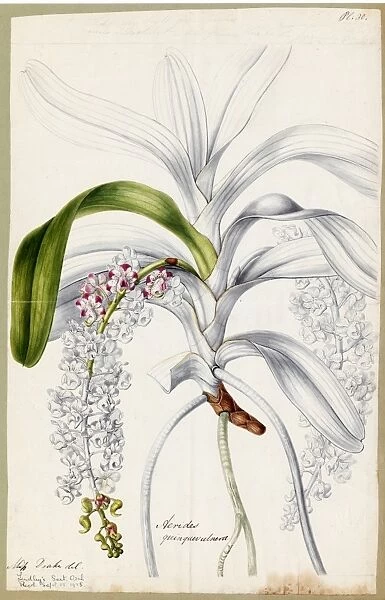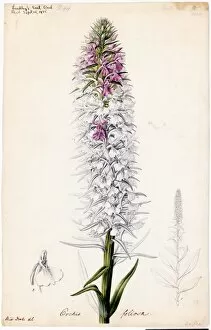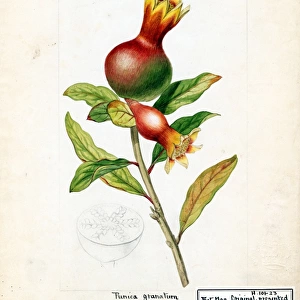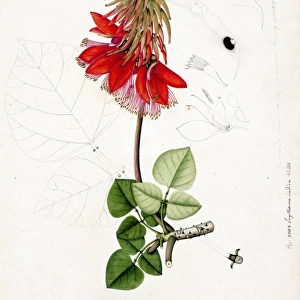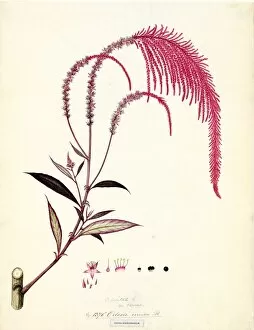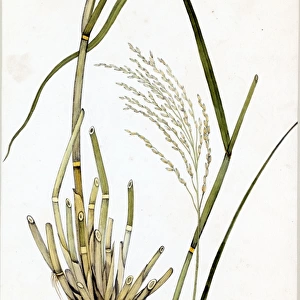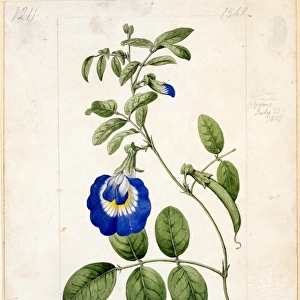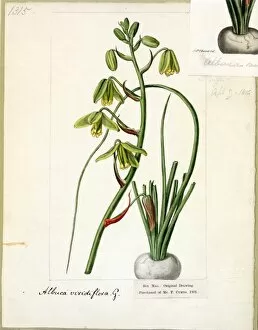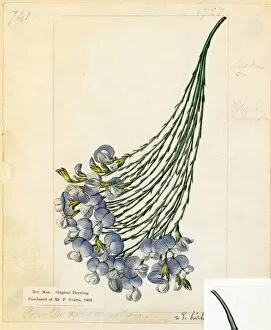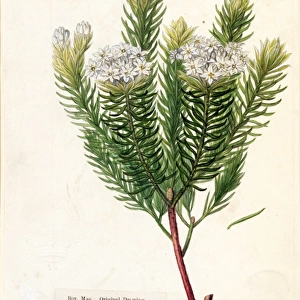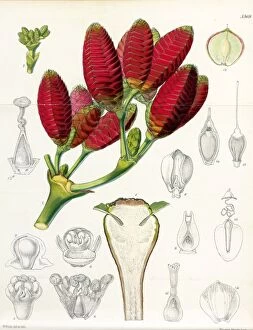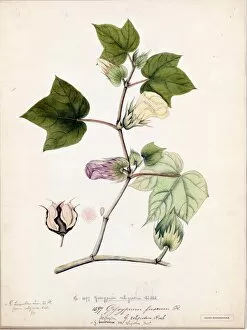Rights Managed > Botanical Art
Aerides quinquevulnera, 1838
Purchase This Item For Download
world rights, single editions, non exclusive use
Filename: ILL_Drake_Miss_051202pl_18.jpg
Size: 5512 x 8579 (11.3MB)
Date: 3rd December 2007
Credit: © The Board of Trustees of the Royal Botanic Gardens, Kew
© The Board of Trustees of the Royal Botanic Gardens, Kew
![]()
Wall Art and Photo Gifts from Kew Images
Aerides quinquevulnera, 1838
Original drawing for plate XXX in John Lindleys Sertum orchidaceum: a wreath of the most beautiful orchidaceous flowers; selected by John Lindley, published in 1838. Illustration shows part monochromatic, part colour study of leaves, roots and flowers. Drawing inscribed by Drake across top edge, Thick, fleshy, bright green leaves, veins indistinct - use German blue for the green & a little body colour to give a waxy effect[ ] Aug 8.1839. Also inscribed by Drake Cuming s...[ ]. Several creases on drawing as a result of being poorly mounted. Also inscribed lower left corner in different hand Rec d Sept. 15 1925. According to Lindley, Mr Hugh Cuming, who has been passing some time in the Philippines, and who has investigated the Botany of those rich islands with great zeal and industry, sent the plant now published to Messrs. Loddiges: with whom it flowered in August last. This date corresponds with Drakes inscription (Lindleys publication was printed as ten fascicles beginning in 1838) The reference to German blue probably means a colour close to Prussian blue, which was used as a dye to colour German military uniforms at the time
Media ID 654377
© The Board of Trustees of the Royal Botanic Gardens, Kew
Botanical Art Orchid Orchidaceae
FEATURES IN THESE COLLECTIONS
> Botanical Art
> Orchids
MADE IN THE USA
Safe Shipping with 30 Day Money Back Guarantee
FREE PERSONALISATION*
We are proud to offer a range of customisation features including Personalised Captions, Color Filters and Picture Zoom Tools
SECURE PAYMENTS
We happily accept a wide range of payment options so you can pay for the things you need in the way that is most convenient for you
* Options may vary by product and licensing agreement. Zoomed Pictures can be adjusted in the Cart.

